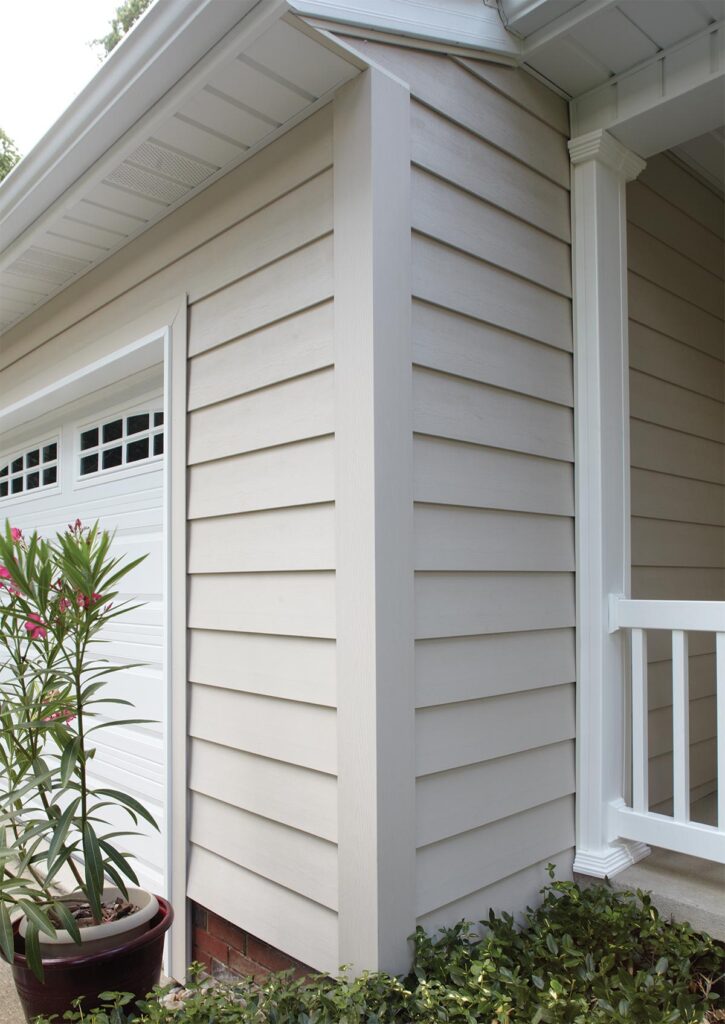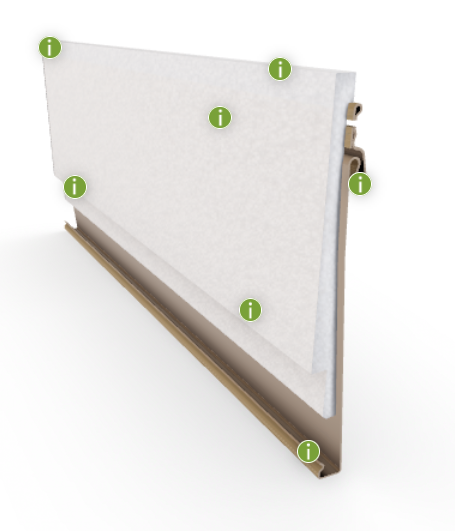
What to Know Before Replacing Siding on Your Home
Nothing gives a home a more dramatic facelift than new siding. A clean and bright new exterior façade elevates the appearance of any architectural style and has a major impact on the look of your home. Since it is typically the most noticeable exterior feature, the right siding plays an essential role in the curb appeal of your home.
The good news is that you don’t need to sacrifice quality and protection in the pursuit of beauty. Today’s siding formulations and options offer durability, energy efficiency, long-lasting performance, and good looks. Three factors to consider when replacing siding on a house:
1. Materials
Vinyl Siding is one of the most popular exterior cladding products available, surpassing aluminum, brick, and hardwood. The overall low material and installation cost, minimal maintenance, long-term performance, and transformative beauty make it a favorite among installers and homeowners. Engineered for long-term performance. Heat-resistant pigments deflect damaging UV rays, and weather-barrier additives protect color from fading. The formulation is engineered with high-grade impact modifiers, strengthening each panel to combat damage from hail and wind-blown debris. Vinyl siding’s long-lasting durability means it remains longer on the house, not in a landfill. Up to 99% of vinyl siding and accessory scrap can either be re-used in the manufacturing process or recycled to make other types of products.
Fiber-Cement Siding (aka: Hardie Board) is a strong, long-lasting material made up of sand, cement, and wood fibers. Once mixed and cured, this combination creates a siding that can stand the test of time and elements. It masquerades as masonry or wood, experiences wear-and-tear like concrete, and can help your home to survive some of the harshest elements of your local environment. Manufacturers create this item by mixing Portland cement with wood pulp so that you can improve the affordability, durability, and looks of your property.
This siding option is the only one that gives you the minimal upkeep function of masonry with the look of shingles, painted clapboard, or even brick and stone.
Some of the benefits of fiber-cement siding are: Withstands hurricane force winds, Stands up against salty air and water, Non- flammable, Remarkably Realistic, Paintable, Resistant to wind, rain, salt water, insects, rot and small critters, Industrial strength durability at a low cost, Environmentally neutral – Does not expel pollutants, Easy to maintain
Composite Siding is another great option. National HomeCraft provides a superior composite siding called Everlast. Everlast’s innovative triple-composite process yields the most advanced siding material in the industry. Wood, vinyl, fiber cement, and other composites are no match because, despite costly required maintenance, you’ll find these alternatives still fade and deteriorate over time.
Unlike other solid siding products, Everlast’s unique combination of inorganic minerals, polymer resins, and acrylic colorants produces a thick, solid, and strong siding with unsurpassed durability. he face of Everlast products is made from a highly durable and fade-resistant acrylic colorant layer that is chemically bonded to the substrate. Then each Everlast plank or panel is embossed with Everlast’s CedarTouch finish – the imprint of a rough sawn plank of real top-grade cedar. The result in the most authentic and UV-resistant siding on the
market.
Unlike fiber cement, wood, and engineered wood, Everlast siding is virtually impervious to water – siding’s enemy #1. This means your Everlast siding will never swell, bow, split, or rot. It’s what makes Everlast suitable for any locale, including those with harsh freeze/thaw seasons.
Plus, wood and engineered wood siding are vulnerable to wood-boring insects, requiring costly and recurring pest control. Everlast siding’s all inorganic composition helps to eliminate this problem.
2. Insulation
Did you know that most wall insulation is placed only between the studs? Since wall studs represent up to 25% of the wall surface of an average home, that’s like having one entire wall with no insulation at all. Insulated siding blankets your home, providing a continuous temperature barrier between the studs and exterior wall of your home. Look for insulated siding options that are tested and proven to increase the R-value (a measure of a material’s resistance to heat flow) of an exterior wall.
3. Color and Style
Curb appeal is a huge factor in any home improvement project, and vinyl siding offers an incredible array of styles and shades that boost the appearance of your home. Choosing the right color can be a tough decision; it’s not easy to envision your entire house using just a small color chip. To get it right, start by uploading a photo of your home into the ProVia Visualizer so you can see the overall image. Choose from classic whites, earth tones, bright and vivid shades, or bold, darker hues, and preview how the entire exterior of your home will look with a new color scheme. ProVia vinyl siding is available in multiple styles of clapboard and Dutch lap woodgrains, rough-sawn shingle and staggered shake, and vertical board & batten profiles.

Insulated Vinyl Siding (shown above) helps to provide an extra level of protection from heat and humidity for your home and is 100% recyclable.

Hardie Board Fiber-Cement Siding (shown above) gives you the minimal upkeep of masonry with the look of shingles, painted clapboard, or even brick and stone.

Everlast Composite Siding (shown above) is far superior to any siding option on the market. Manufactured from composite materials, it is thicker, stronger, insect resistant, water resistant, freeze resistant, and will never swell, bow, split, crack, peel, rot, or need to be painted. It is made in the USA, 100% recyclable, zero maintenance, and is the last siding you will ever need.
